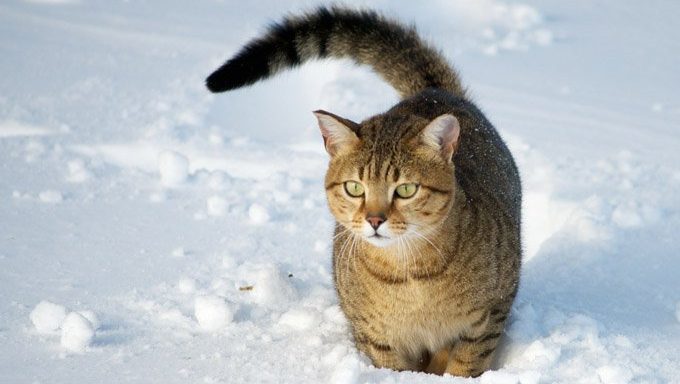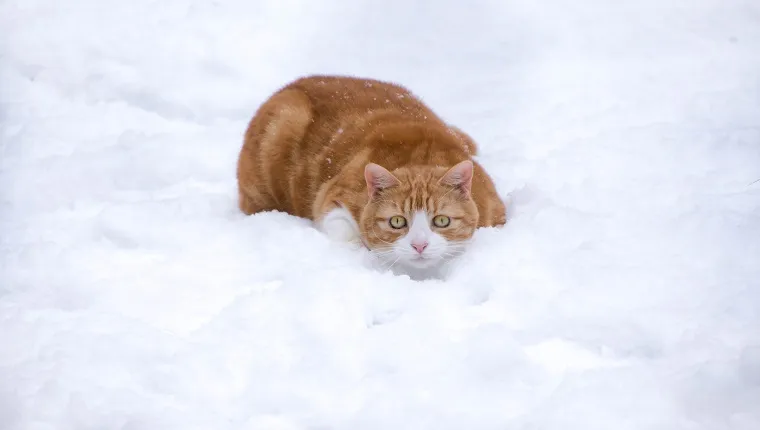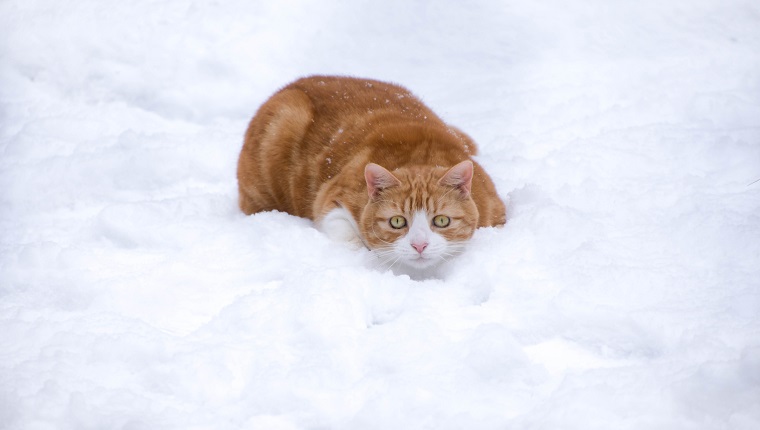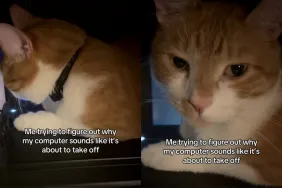
Every winter, pets die when people leave them outside in cold temperatures. Just because an animal has fur does not mean that they’re able to live in the snow or cold. They need shelter and warmth to survive the long winter months.
If your cat gets outside in cold weather, you’re going to need to find them quickly. If they’ve been out long enough, hypothermia could set in.
Here’s what you need to know about hypothermia (low body temperature) and how to prevent it from ever happening to your beloved furry friends.
What Is Hypothermia?
Hypothermia is an extreme lowering of the body temperature and happens when pets are exposed to frigid temperatures for too long, or if their fur gets wet in a cold, windy environment.
When the body temperature drops, heart rate and breathing slow down, which can lead to several problems.
The consequences of sustained, severe hypothermia may include neurological problems (including coma), heart problems, kidney failure, slow or no breathing, frostbite, and eventually death.
Symptoms Of Hypothermia In Cats

Although hypothermia is not commonly seen, when it does happen, it tends to be because pet parents fail to recognize the early signs. It also happens when people mistakenly leave pets outside overnight.
Here are symptoms that you should watch out for in cats:
- Strong shivering and trembling followed by no shivering
- Acting sleepy or lethargic and weak
- Fur and skin are cold to the touch
- Body temperature is below 95 degrees (Fahrenheit)
- Decreased heart rate
- Pupils may be dilated (the black inner circle of the eye appears larger)
- Gums and inner eyelids are pale or blue
- Trouble walking
- Trouble breathing
- Stupor, unconsciousness, or coma
What You Should Do
If you suspect your cat is suffering from hypothermia, you must act as quickly as possible to treat them. You may be able to reverse the early stages by just warming your cat up, but later stages will require more treatment and a trip to the emergency vet.
Here are some steps you should take:
- Remove your pet from the cold and put them in a warm room.
- Dry off your pet thoroughly either with towels or a hair dryer set on low and held about twelve inches away.
- Wrap your pet in a blanket (warm the blanket in the clothes dryer first).
- Wrap hot-water bottles in towels (to prevent burning your pet) and place them on your pet’s abdomen.
- Check the pet’s temperature with a thermometer. If it’s below 95 degrees, the pet could be at risk for hypothermia. Take them to a veterinarian immediately.
If your cat’s temperature is above 95 degrees Fahrenheit, retake their temperature every ten to 15 minutes to see how severe the hypothermia is while doing the warming techniques. Once their temperature is 100 degrees or higher, you can remove the hot-water bottle, but be sure to keep them warm.
Get your cat checked by a veterinarian the same day even when their temperature reaches 99 degrees or higher because one incidence of hypothermia can be harmful and make them prone to it again.
If your pet doesn’t respond to warming up their body within 30 to 45 minutes, go to straight to emergency vet clinic.
Prevention Is The Best Medicine
You can prevent hypothermia in your cat by not allowing them to roam outside for too long in very cold weather or near frigid water.
Be aware of how well your pet tolerates the cold, as very young pets, very old pets, and those with short hair can be most susceptible to hypothermia. If that describes your cat, consider keeping them indoors.
Above all, use common sense. If it’s too cold for you to venture outside, even while bundled up, chances are the same goes for your cat.
How do you keep your cat safe from hypothermia? Do you always keep them indoors in cold weather? Let us know in the comments below!









